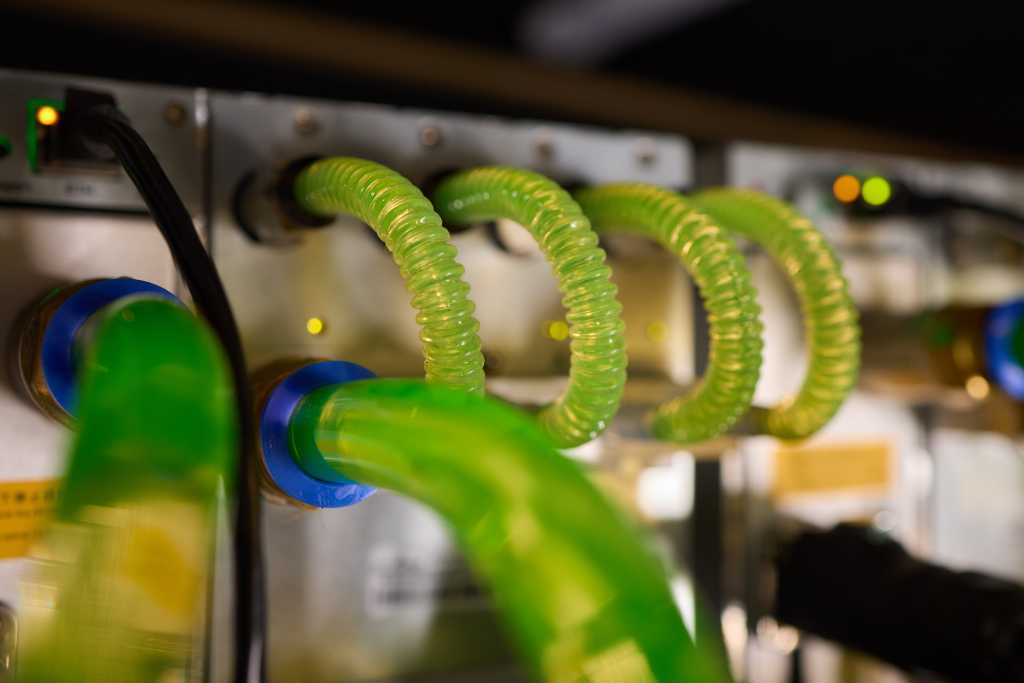In this week’s Charging Forward, Gore Street, Eku and BW ESS reach energisation at UK battery energy storage system (BESS) projects, amid warnings over an oversubscribed grid connection queue.
This week’s headlines:
- Root-Power secures planning consent for 40 MW Rotherham BESS
- Sungrow and BW ESS Bramley Project begins operations
- Warnings over UK grid connection queue
- Invinity and Frontier Power partner on UK long duration energy storage projects
- Fire at Statera BESS site in Essex brought under control
- Gore Street energises UK Enderby BESS project
- Eku energises two UK BESS projects
- International news: China and Saudi Arabia collaborate on 12.5 GWh of energy storage projects and Canadian firm Hydrostor secures $200 million for compressed air energy storage
Root-Power consent for 40 MW Rotherham BESS
UK energy storage developer Root-Power has secured planning consent for a 40 MW/80 MWh BESS project in Brinsworth, Rotherham.
Root-Power said the site will power 80,000 homes for a two-hour period once fully operational, and delivering a biodiversity net gain of 32.76%.
The Brinsworth BESS is the fourth planning approval for Root-Power in 2025, following consents at sites in Yorkshire, County Durham and the Scottish Highlands.
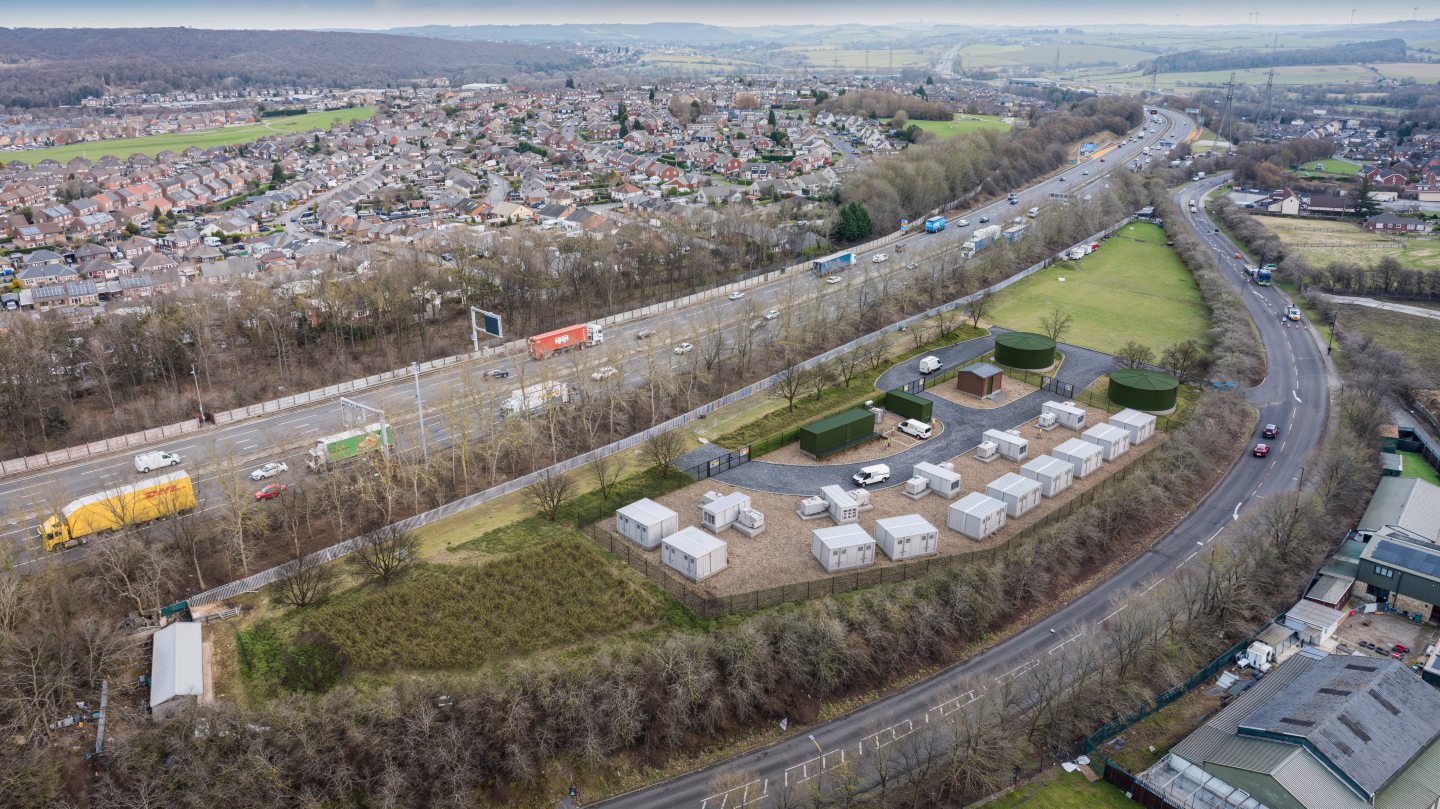 © Supplied by Root-Power
© Supplied by Root-PowerRoot-Power managing director Neil Brooks said the company “carefully selected a near perfect location” for the Brinsworth project.
“Managing competing constraints is always difficult when planning a project, so finding a suitable location only 1 mile from the point of connection in an urban area, without causing unacceptable noise or visual impact on sensitive receptors is a real achievement,” he said.
“We are happy to see that the planning committee unanimously supported our application, which is a real vote of confidence in our process and team.”
Sungrow and BW ESS Bramley BESS starts up
Swiss energy storage developer BW ESS and Chinese solar panel and storage manufacturer Sungrow have commenced operations at the 100 MW/331 MWh Bramley BESS project.
The BESS utilises Sungrow’s three-hour PowerTitan 2.0 battery, making it the first European project equipped with Sungrow’s liquid-cooled technology.
As a result, BW ESS said the Bramley BESS is “among the UK’s longest-duration and most versatile energy storage assets”.
BW ESS chief executive Erik Strømsø said the project coming online is a “landmark moment” for the company.
“Bramley is a state-of-the-art, pioneering project aligned with our mission to unlock the value of energy storage,” he said.
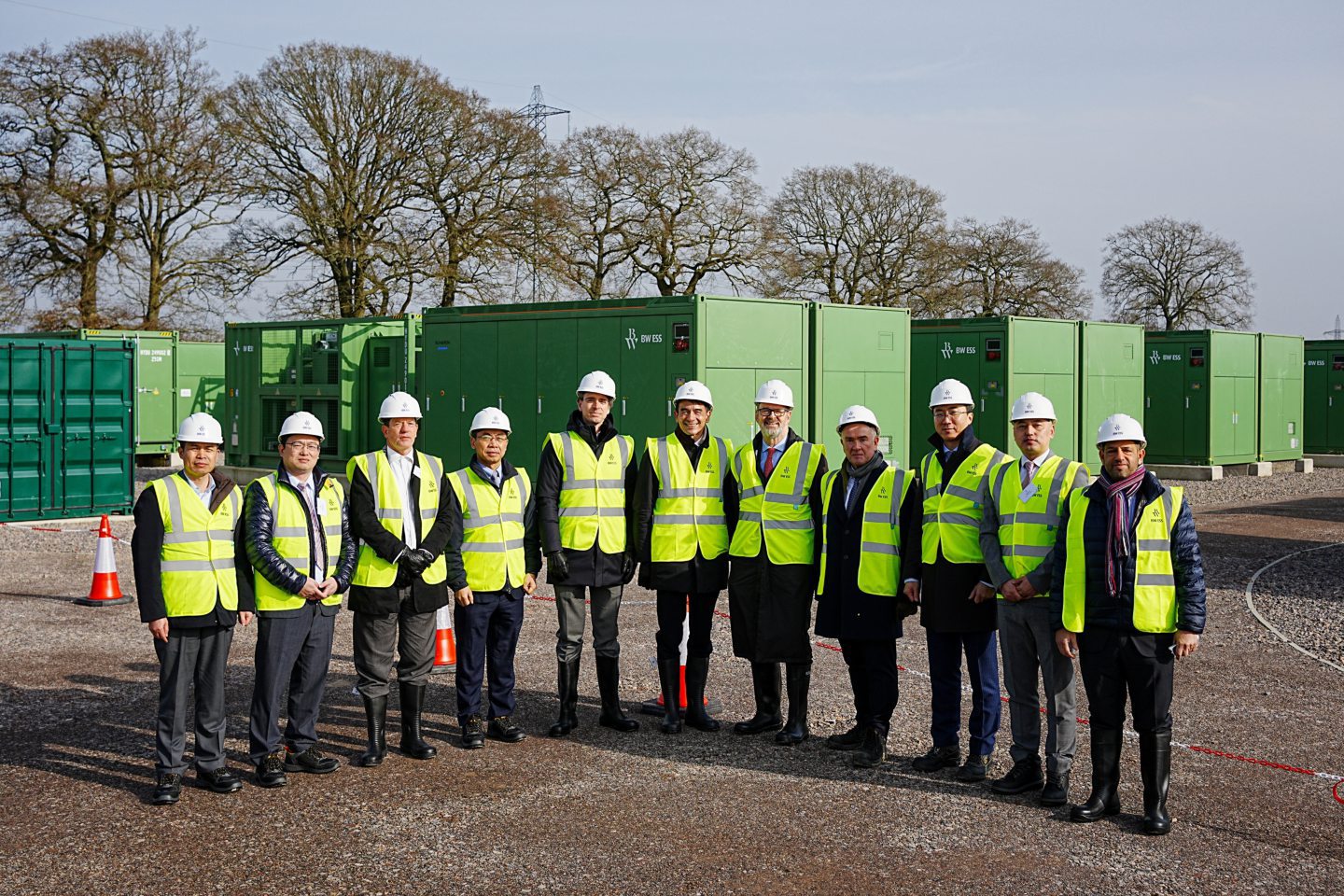 © Supplied by Sungrow
© Supplied by SungrowSungrow Europe president Shawn Shi said the company was proud to partner with BW ESS on the “groundbreaking project”.
“The Bramley BESS exemplifies our commitment to advancing clean energy solutions that not only support grid stability but also contribute to a more resilient and sustainable energy future,” he said.
“With the PowerTitan 2.0, we are setting new standards for efficiency, safety, and scalability, ensuring that we continue to meet the evolving energy needs of the UK and beyond.”
In 2024, BW ESS signed a seven-year tolling agreement with Shell Energy Europe Limited for the Bramley BESS.
The company said the agreement represents a market-first for a single battery energy storage asset in Europe, pioneering a new revenue model for BESS projects.
“Shell Energy Europe is delighted to collaborate on this project, which sets a benchmark for innovative revenue models in the UK and European battery storage markets,” said Rupen Tanna, Head of Power at Shell Energy Europe Limited.
Elsewhere, BW ESS and Sungrow are also collaborating on developing the Hams Hall BESS project in North Warwickshire.
Warnings over UK grid connection queue
The UK battery storage connection queue is now double the grid’s requirement for 2030, according to a Cornwall Insight report.
The analysis highlights the growing pressure on the UK government and the National Energy System Operator (NESO) to provide clarity on which projects will move forward, and which will not.
According to the government’s Clean Power 2030 action plan, the required BESS capacity for 2030 will be 27 GW.
But Cornwall Insight said the connections queue for BESS out to 2030 is 61GW, more than double the respective target capacity range.
Meanwhile the queue out to 2035 is 129GW, more than quadruple what is sought by then.
Cornwall Insight analyst James Lomax said there are several challenges threating the government’s 2030 clean power goals, with the connection queue a “major hurdle”.
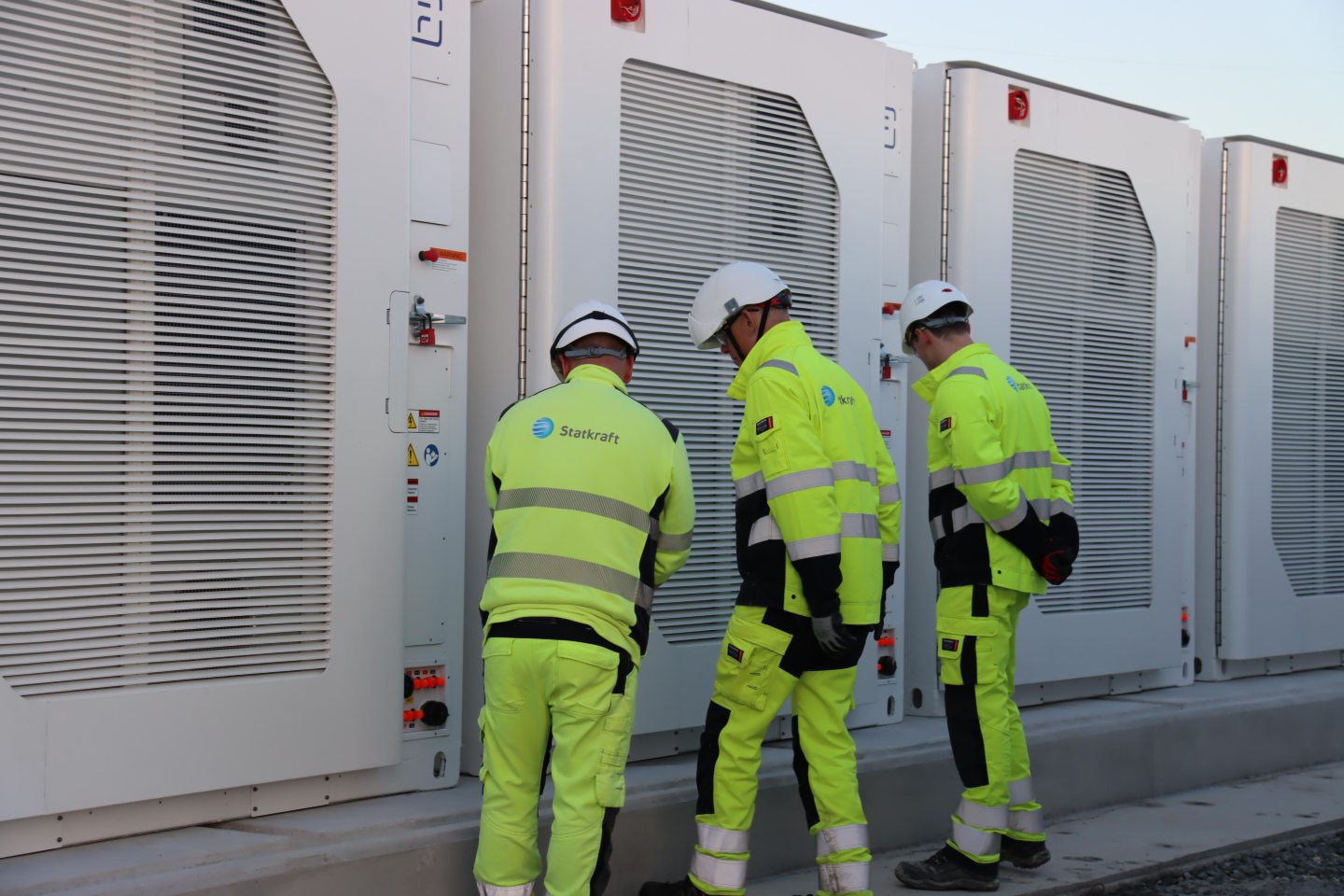 © Supplied by Statkraft
© Supplied by Statkraft“Ofgem’s minded-to decision on approving NESO’s connection reform plan gives clarity on the process that will be used to determine which projects move forward and which do not,” Lomax said.
“However, given the rapid expansion of battery energy storage over and above forecast connections capacity, and now the proposed decision on how to prioritise and streamline connections, it could well be that more than 100GW of BESS that wants to connect to the network will not get the option to until at least 2035 or even much later.
“If an asset can’t connect to the grid, it simply can’t contribute.”
Lomax said while NESO and Ofgem have set out some clarity on which projects will be protected and given a place in the connection queue, the challenge will now be building the infrastructure to allow them to connect.
“In order to meet the Clean Power 2030 capacity targets, we would need to connect assets to the network on average 2.5x quicker than we have over the past five years,” he added.
Responding to the report, Apatura chief executive officer Giles Hanglin said the UK “simply can’t afford to delay planned battery storage projects”.
“While the queue is oversubscribed, the key differentiator must be project readiness — priority should be given to those with exclusive land rights, advanced planning status, and consent,” he said.
“The focus must be on delivering projects that are sufficiently advanced, have been rigorously assessed through the planning process, and will make a real impact.”
Invinity and Frontier Power partner on long duration projects
Vanadium flow battery manufacturer Invinity Energy Systems (LON:IES) has formed a partnership with Frontier Power to develop long duration energy storage (LDES) projects under the proposed UK cap-and-floor mechanism.
Invinity manufactures LDES batteries at sites in Scotland and Canada, and Frontier Power has reserved up to 2 GWh of manufacturing capacity under the agreement on a right of first refusal basis.
Frontier Power chief executive Humza Malik said the alliance with Invinity marks a pivotal step in “revolutionising” the UK’s approach to LDES.
“Frontier Power’s track record in developing critical energy infrastructure, coupled with Invinity’s innovative battery technology, creates a formidable force in addressing the UK’s energy transition challenges,” Malik said.
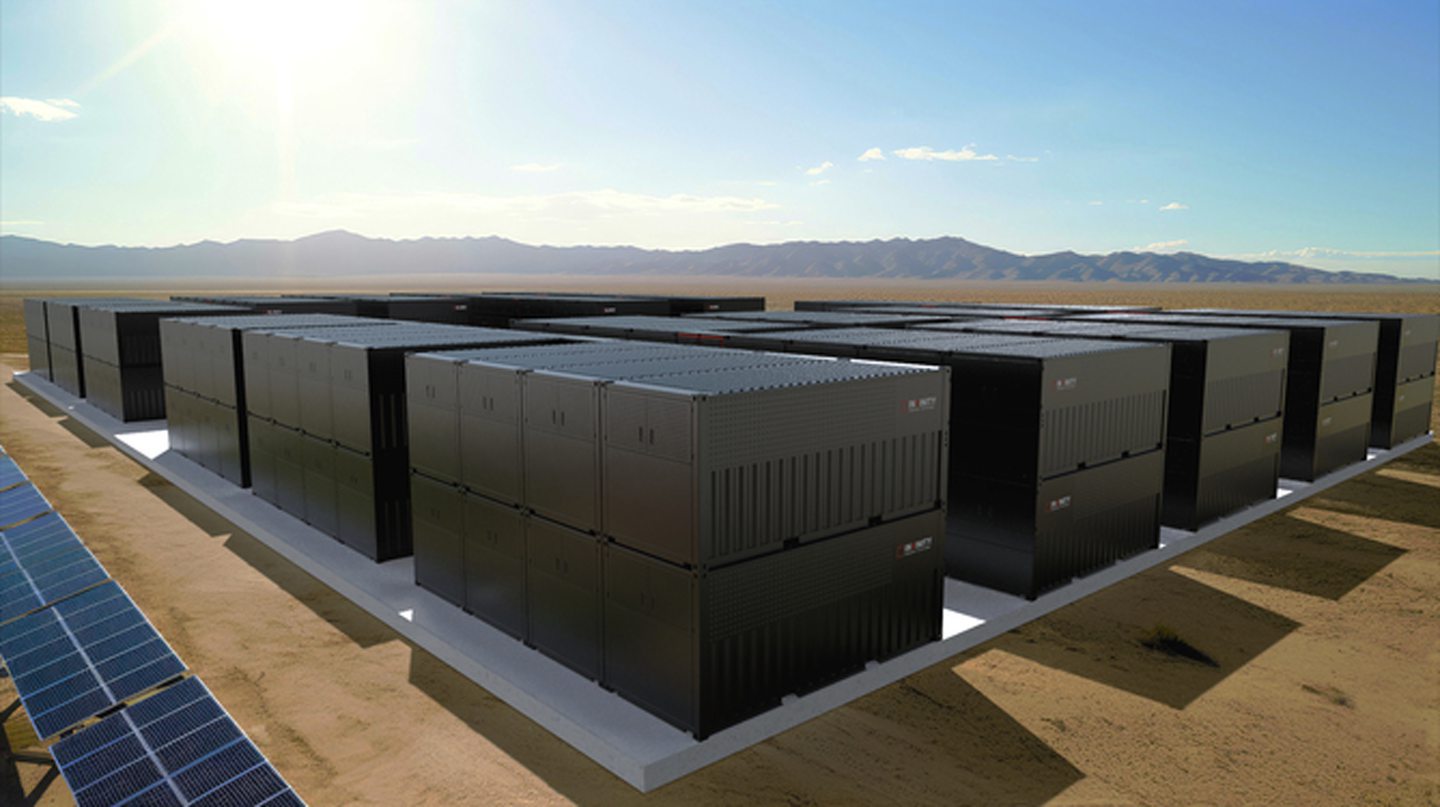 © Image: Invinity Energy Systems
© Image: Invinity Energy Systems“This partnership goes beyond deploying batteries; it’s about building a sustainable, secure energy future for the UK while creating economic opportunities across the country.”
While initially focused on projects in the UK, Invinity said the partnership has “significant global potential” due to Frontier’s experience in Asian markets like Japan.
Invinity chief executive Jonathan Marren pointed to Frontier’s project finance expertise and its experience in developing interconnector projects which operate on the same cap-and-floor revenue model as the LDES scheme.
“Maximising the use of the UK’s own energy resources in the form of wind and solar power is essential to delivering enhanced energy security while also driving down costs for consumers,” Marren said.
“By deploying our Made in Britain batteries in partnership with Frontier Power and others across the UK energy industry, we are meeting this challenge head on.”
Invinity launched its next generation Endurium flow battery in December, which can be configured for discharge durations spanning between four and 18 hours.
Fire at Statera BESS site in Essex
Firefighters responded after a fire broke out at Statera Thurrock BESS project in Essex earlier this month.
Essex County Fire and Rescue Service said fire crews responded after receiving reports of the fire on Wednesday 19 February at a BESS project in East Tilbury, Essex.
The service said with close monitoring and a carefully controlled response, including specialist thermal imaging cameras and drones, the crew contained the fire and made sure there was no risk to the wider community.
On Thursday 20 February, the fire service issued an update saying they were able to scale back their response and hand the site back over to site management.
In a statement to Solar Power Portal, a Statera spokesperson said construction activities can resume while an investigation into the cause of the fire is underway.
The spokesperson said the fire occurred in a single containerised battery unit, and the site was promptly evacuated with fire crews arriving on scene within 10 minutes.
“The strategic safety planning of the site, which was designed and built in full compliance with NFPA standards, including the provision of both fire hydrants and a water lagoon, as well as adequate spacing between BESS units and includes a pre-agreed emergency response plan with the local fire service, all contributed to a safe and efficient resolution of the incident,” the spokesperson said.
Gore Street energies UK Enderby BESS
UK energy storage fund Gore Street Energy Storage Fund (LON:GSF) has energised its remaining in-construction BESS assets, including the 57 MW/57 MWh Enderby BESS in Leicestershire.
GSF said the successful energisation of all its remaining assets under construction marks a “pivotal milestone” for the company, with its energised portfolio reaching its target of 753.4 MW.
Eku energises two UK BESS projects
UK storage developer Eku Energy has energised two BESS projects totalling 68 MW.
The assets include the 40 MW/55 MWh Loudwater BESS in Buckinghamshire and the 28 Mw/56 MWh Basildon BESS in Essex.
Eku Energy chief executive Daniel Burrows said commissioning of the two projects is “coming soon”, and once operational the company will exceed 100 MW of operating capacity in the UK.
The two projects utilise NHOA Energy‘s battery storage systems.
Eku Energy is jointly owned by Australia’s Macquarie Asset Management and Canada’s British Columbia Investment Management Corporation (BCI).
China and Saudi Arabia collaborate on 12.5 GWh of energy storage projects
Chinese firm BYD Energy Storage has signed an agreement with Saudi Electricity Company to deliver grid-scale energy storage projects totalling 12.5 GWh.
Combined with a previous 2.6 GWh project, the two firms are now cooperating on a total of 15.1 GWh worth of projects.
BYD will provide its MC Cube-T ESS technology at five sites in Saudi Arabia, and the company said the “landmark project” will “redefine” energy storage in the global energy landscape.
Hydrostor secures $200m for compressed air energy storage
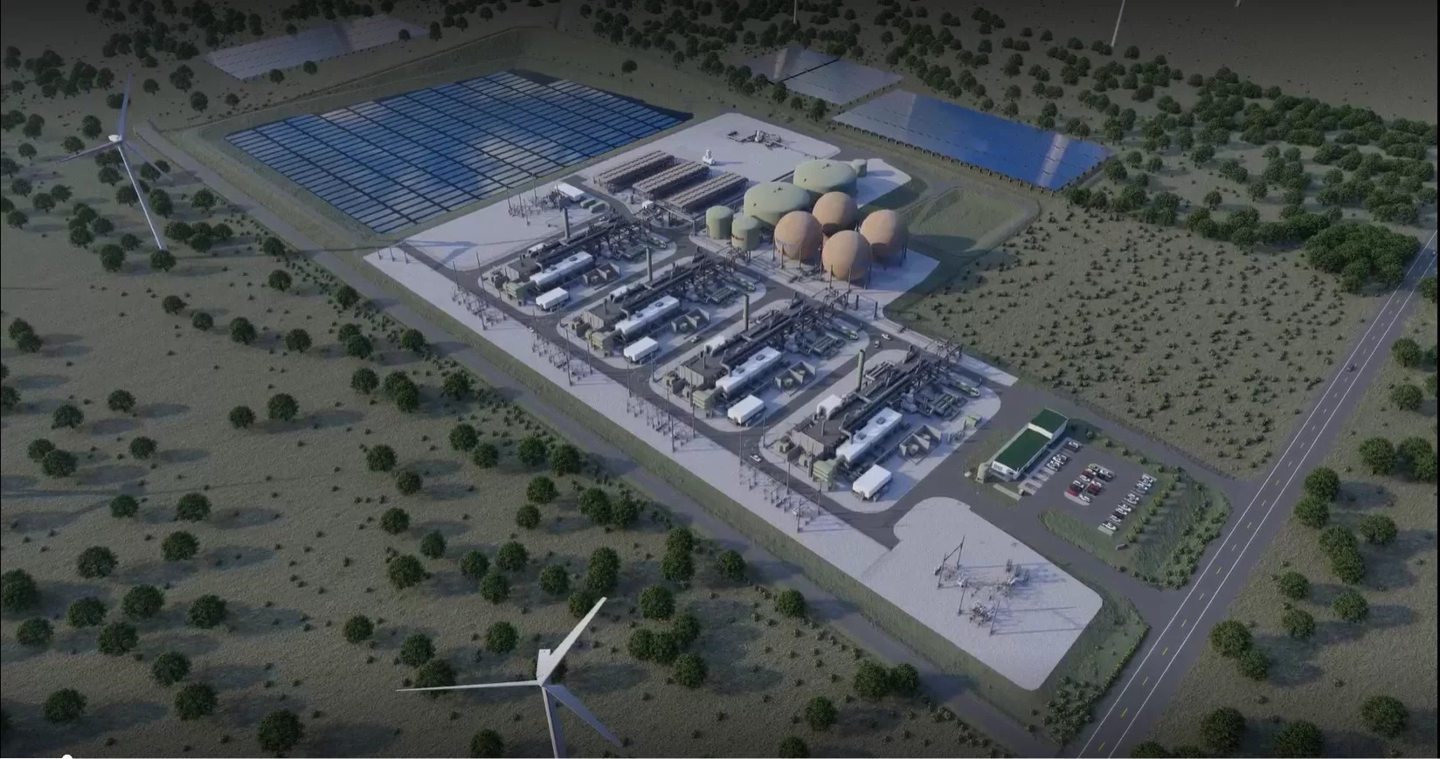 © Hydrostor
© HydrostorCanadian LDES developer Hydrostor has secured a $200m investment in its advanced compressed air energy storage (A-CAES) projects.
The funding, from Canada Growth Fund (CGF), Goldman Sachs Alternatives and Canada Pension Plan Investment Board, consists of a $150m convertible note financing commitment from investors.
Meanwhile, CGF has also provided an additional $50m to fund part of the development costs for Hydrostor’s Canadian projects.
These include the Quinte Energy Storage Centre, a 500 MW/4 GWh A-CAES project in Ontario.
Hydrostor chief executive and co-founder Curtis VanWalleghem said the investment is “another vote of confidence” in the company’s technology and its “robust project pipeline”.
Hydrostor is also developing projects in New South Wales, Australia and California in the United States, which are set to begin construction later this year.















